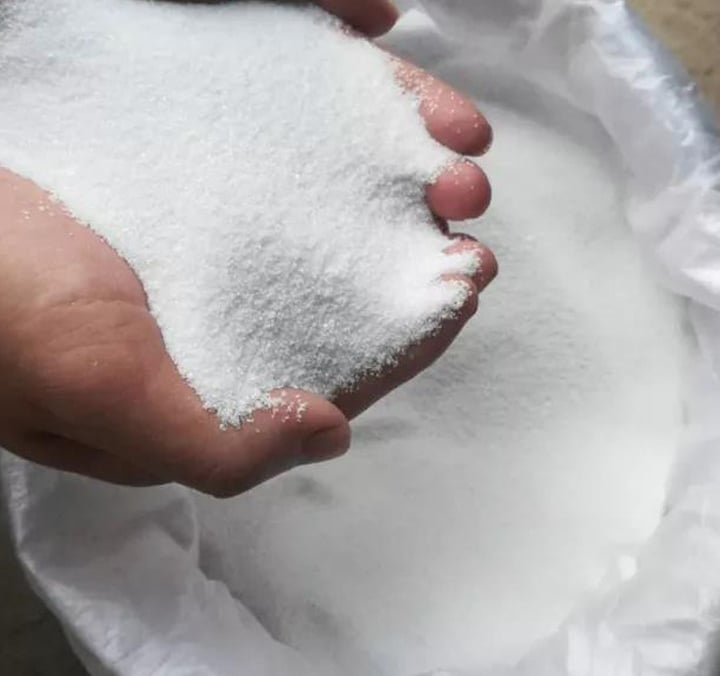The New Role of White Corundum in the Medical Technology Revolution
In the operating room, Dr. Chen, the head of the orthopedics department, held up a milky white joint prosthesis and examined it closely under the light. “Ten years ago, this ceramic joint was as brittle as a cookie. Now, it won’t crack even if dropped—the secret lies in this ‘white sapphire‘ coating.” The “white sapphire” he was referring to was the white corundum used in industrial steel polishing. When this aluminum oxide crystal, with a Mohs hardness of 9.0 and a chemical purity of 99%, entered the medical field, a quiet revolution in medical materials began.
XINLI ABRASIVES
8/11/20254 min read


In the operating room, Dr. Chen, the head of the orthopedics department, held up a milky white joint prosthesis and examined it closely under the light. “Ten years ago, this ceramic joint was as brittle as a cookie. Now, it won’t crack even if dropped—the secret lies in this ‘white sapphire‘ coating.” The “white sapphire” he was referring to was the white corundum used in industrial steel polishing. When this aluminum oxide crystal, with a Mohs hardness of 9.0 and a chemical purity of 99%, entered the medical field, a quiet revolution in medical materials began.
1. From Industrial Grinding Wheels to Human Joints: A Cross-Border Revolution in Materials Science
You might be wondering how an abrasive originally used for cutting metal has become the new darling of the medical field. To put it simply, the core pursuit of medical technology is “biomimeticism”—finding materials that can both integrate with the human body and withstand decades of wear and tear. White corundum, on the other hand, possesses a “robust structure”:
Its hardness rivals that of diamond, and its wear resistance exceeds three times that of traditional metal joints.
Its chemical inertness is extremely strong, meaning it does not decompose, rust, or cause rejection in the human body.
Its mirror-like surface makes it difficult for bacteria to attach, reducing the risk of postoperative infection.
As early as 2018, a medical team in Shanghai began exploring the use of white corundum-coated joints. A dance teacher who underwent a total hip replacement returned to the stage six months after surgery. “My metal joints used to wear me so hard that every step felt like shattering glass. Now, I almost forget they’re there when I dance.” Currently, the lifespan of these white corundum-ceramic composite joints has exceeded 25 years, nearly double that of traditional materials.
II. The “Invisible Guardian” on the Scalpel’s Tip
White corundum‘s medical journey began with its radical transformation of medical tools. In the medical device manufacturing workshop, Technical Director Li pointed to a row of gleaming surgical forceps and explained, “After polishing stainless steel instruments with white corundum micropowder, the surface roughness is reduced to less than 0.01 microns—smoother than one ten-thousandth the thickness of a human hair.” This incredibly smooth cutting edge makes surgical cutting as smooth as a hot knife through butter, reducing tissue damage by 30% and significantly accelerating patient healing.
An even more revolutionary application is in dentistry. Traditionally, when using diamond abrasive burs for tooth grinding, the heat generated by high-frequency friction could damage the dental pulp. However, the self-sharpening property of white corundum (constantly developing new edges during use) ensures that the bur remains consistently sharp. Clinical data from a Beijing dental hospital shows that during root canal treatments using white corundum burs, the dental pulp temperature rises by only 2°C, far below the international safety limit of 5.5°C.
III. Implant Coatings: Giving Artificial Organs a “Diamond Armor“
The most imaginative medical application of white corundum is its ability to give artificial organs a “second life.” Using plasma spraying technology, white corundum micropowder is melt-sprayed onto the titanium alloy joint surface at high temperature, forming a dense protective layer 10-20 microns thick. The ingenuity of this structure lies in:
The hard outer layer resists daily friction.
The tough inner base absorbs unexpected impacts.
The microporous structure promotes the in-growth of surrounding bone cells.
Simulations in a German laboratory showed that after 5 million gait cycles, the wear of a knee prosthesis coated with white corundum was only 1/8 that of pure titanium. my country has included this technology in its “Green Channel for Innovative Medical Devices” program since 2024. Domestically produced white corundum-coated hip joints are 40% cheaper than imported products, benefiting hundreds of thousands of patients with bone diseases.
IV. White Corundum “High-Tech” in the Clinic of the Future
Medical Amidst the technological revolution, white corundum is opening up new frontiers:
Nano-scale white corundum polishing agents are used in the manufacture of gene sequencing chips, increasing detection accuracy from 99% to 99.99%, facilitating early cancer screening.
3D-printed artificial vertebrae incorporating white corundum reinforced skeletons offer twice the compressive strength of natural bone, offering hope for patients with spinal tumors.
Biosensor coatings utilize the insulating properties of white corundum to achieve zero-interference transmission of brain-computer interface signals.
A Shanghai research team has even developed biodegradable white corundum bone nails—which initially provide rigid support and slowly release growth-promoting aluminum ions as the bone heals. “In the future, fracture surgery may not require secondary surgery to remove the nail,” said Dr. Wang, the project leader, as he presented experimental data from rabbit tibias: After eight weeks, the nail volume decreased by 60%, and the newly formed bone density was twice that of the control group.
V. China’s Breakthrough in Medical Manufacturing
The medical application of white corundum coincides with the rise of my country’s high-end materials industry. High-purity alumina powder (Al₂O₃≥99.99%) for medical applications, once monopolized by Japan and Germany, now has a domestic production rate of 80%. Medical-grade white corundum microparticles developed by a Jiangxi company have an iron content below 0.01% and are priced at half the price of imported products. Meanwhile, specialized airflow mills launched by equipment companies like Guilin Hongcheng can consistently produce 500-nanometer medical powders, breaking the Western technological blockade.
This article references content from the following blog:


